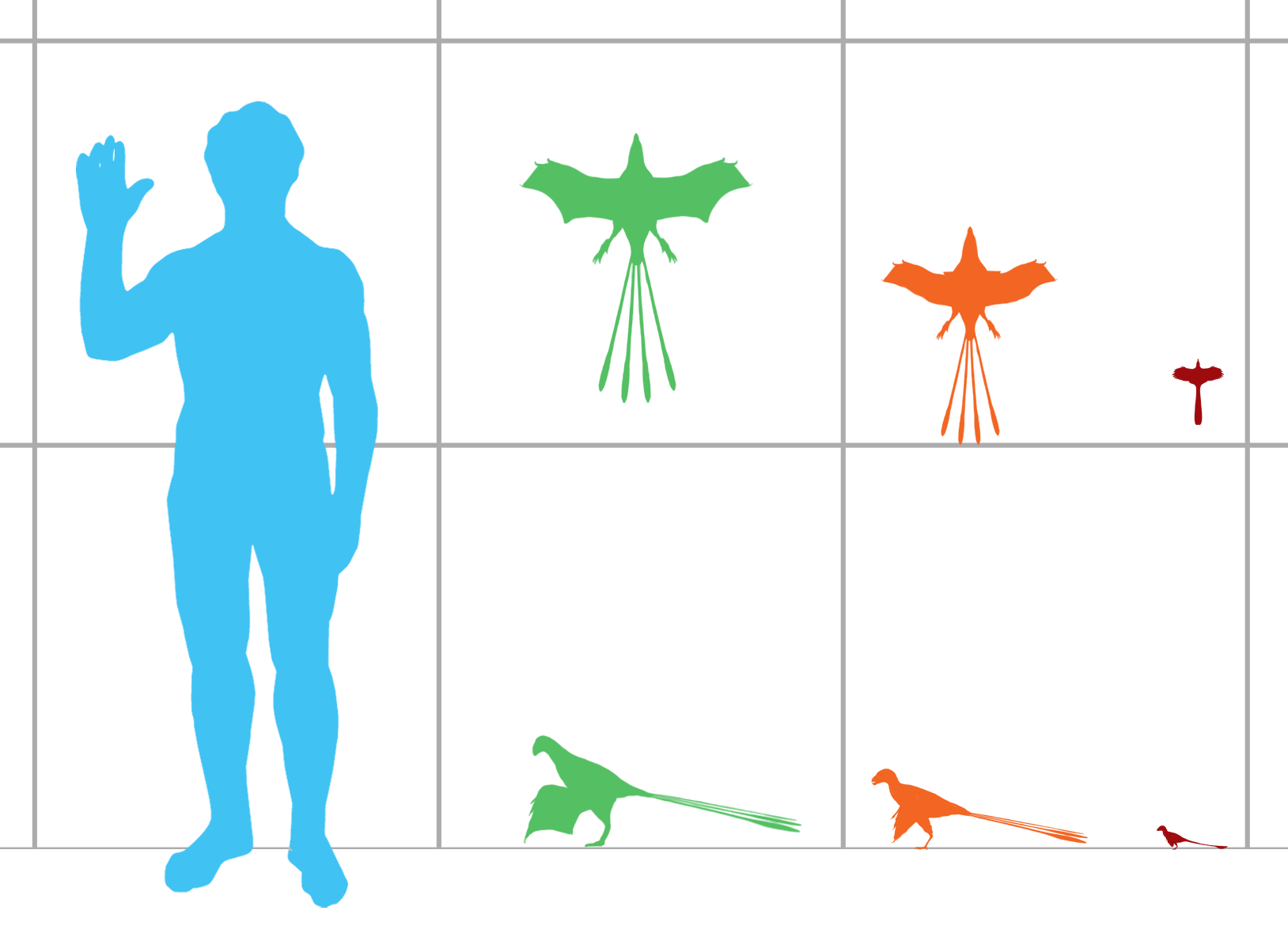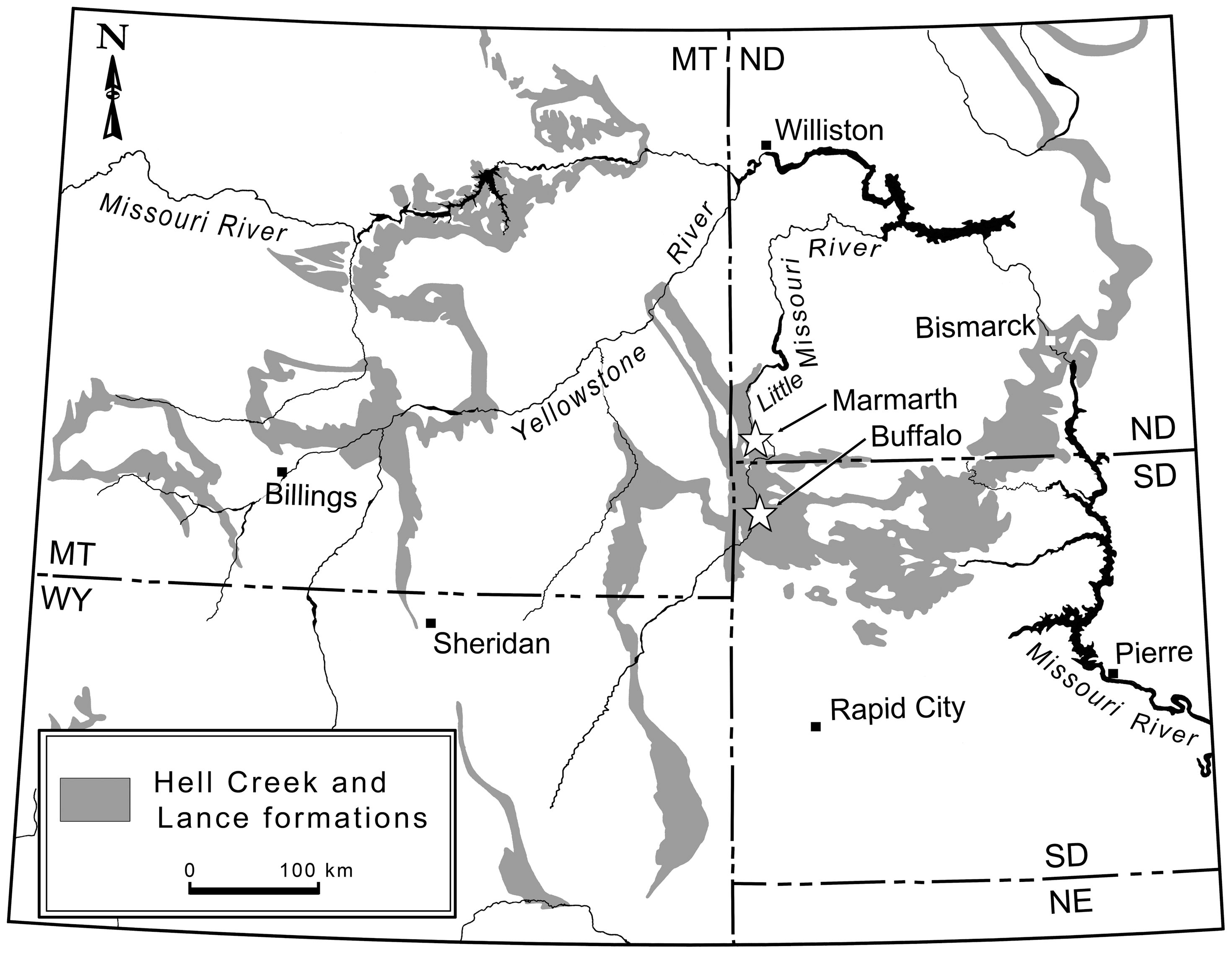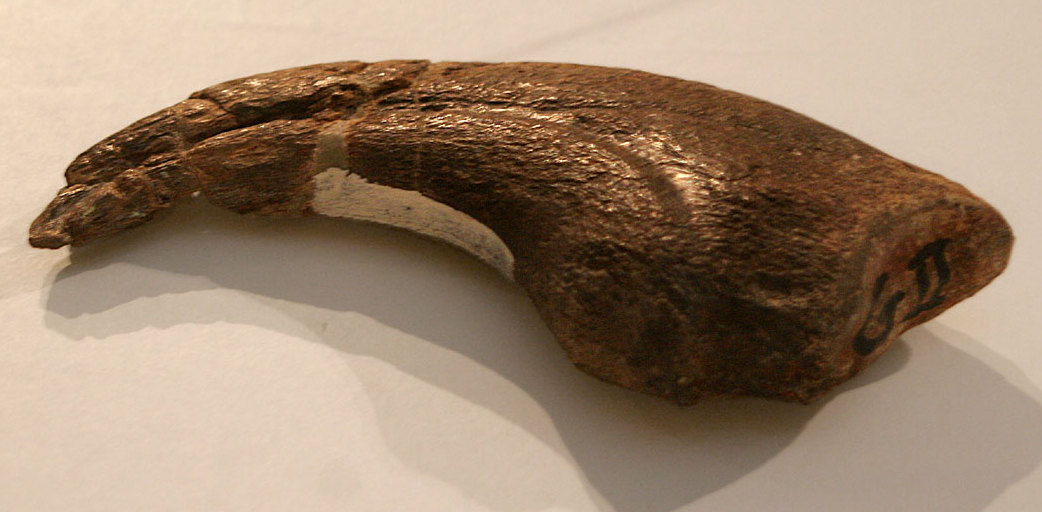|
Oviraptorosauria
Oviraptorosaurs ("egg thief lizards") are a group of feathered maniraptoran dinosaurs from the Cretaceous Period of what are now Asia and North America. They are distinct for their characteristically short, beaked, parrot-like skulls, with or without bony crests atop the head. They ranged in size from ''Caudipteryx'', which was the size of a turkey, to the 8-meter-long, 1.4-ton ''Gigantoraptor''. The group (along with all maniraptoran dinosaurs) is close to the ancestry of birds. Some researchers such as Maryanska ''et al'' (2002) and Osmólska ''et al.'' (2004) have proposed that they may represent primitive flightless birds.Osmólska, Halszka, Currie, Philip J., Brasbold, Rinchen (2004) "The Dinosauria" Weishampel, Dodson, Osmólska. "Chapter 8 Oviraptorosauria" University of California Press. The most complete oviraptorosaur specimens have been found in Asia. The North American oviraptorosaur record is sparse.Varricchio, D. J. 2001. Late Cretaceous oviraptorosaur (Theropoda ... [...More Info...] [...Related Items...] OR: [Wikipedia] [Google] [Baidu] |
Citipati
''Citipati'' (; meaning "funeral pyre lord") is a genus of oviraptorid dinosaur that lived in Asia during the Late Cretaceous period, about 75 million to 71 million years ago. It is mainly known from the Ukhaa Tolgod locality at the Djadokhta Formation, where the first remains were collected during the 1990s. The genus and type species ''Citipati osmolskae'' were named and described in 2001. A second species from the adjacent Zamyn Khondt locality may also exist. ''Citipati'' is one of the best-known oviraptorids thanks to a number of well-preserved specimens, including individuals found in brooding positions atop nests of eggs, though most of them were initially referred to the related ''Oviraptor''. These nesting specimens have helped to solidify the link between non-avian dinosaurs and birds. ''Citipati'' was among the largest oviraptorids; it is estimated to have been around in length and to have weighed . Its skull was highly pneumatized, short, and had a characteristic c ... [...More Info...] [...Related Items...] OR: [Wikipedia] [Google] [Baidu] |
Maniraptora
Maniraptora is a clade of coelurosaurian dinosaurs which includes the birds and the non-avian dinosaurs that were more closely related to them than to ''Ornithomimus velox''. It contains the major subgroups Avialae, Deinonychosauria, Oviraptorosauria and Therizinosauria. '' Ornitholestes'' and the Alvarezsauroidea are also often included. Together with the next closest sister group, the Ornithomimosauria, Maniraptora comprises the more inclusive clade Maniraptoriformes. Maniraptorans first appear in the fossil record during the Jurassic Period (see '' Eshanosaurus''), and survive today as living birds. Description Maniraptorans are characterized by long arms and three-fingered hands (though reduced or fused in some lineages), as well as a "half-moon shaped" (semi-lunate) bone in the wrist (carpus). In 2004, Tom Holtz and Halszka Osmólska pointed out six other maniraptoran characters relating to specific details of the skeleton. Unlike most other saurischian dinosaurs, which h ... [...More Info...] [...Related Items...] OR: [Wikipedia] [Google] [Baidu] |
Caudipteryx
''Caudipteryx'' (which means "tail feather") is a genus of peacock-sized theropod dinosaurs that lived in the Barremian age of the early Cretaceous (about 124.6 million years ago). They were feathered and extremely birdlike in their overall appearance, to the point that some paleontologists think it was a bird. Two species have been described: ''C. zoui'' (the type species), in 1998, and ''C. dongi'', in 2000. ''Caudipteryx'' fossils were first discovered in the Yixian Formation of the Sihetun area of Liaoning Province, northeastern China in 1997. Description ''Caudipteryx'', like many other maniraptorans, has a mix of reptile- and bird-like anatomical features.Witmer, L.M. (2005). “The Debate on Avian Ancestry; Phylogeny, Function and Fossils”, ''Mesozoic Birds: Above the Heads of Dinosaurs'' : 3–30. It had a short, boxy skull with a beak-like snout that retained only a few tapered teeth in the front of the upper jaw. It had a stout trunk, long legs and was probably a ... [...More Info...] [...Related Items...] OR: [Wikipedia] [Google] [Baidu] |
Scansoriopterygidae
Scansoriopterygidae (meaning "climbing wings") is an extinct family of climbing and gliding maniraptoran dinosaurs. Scansoriopterygids are known from five well-preserved fossils, representing four species, unearthed in the Tiaojishan Formation fossil beds (dating to the mid-late Jurassic Period) of Liaoning and Hebei, China. '' Scansoriopteryx heilmanni'' (and its likely synonym ''Epidendrosaurus ninchengensis'') was the first non-avian dinosaur found that had clear adaptations to an arboreal or semi-arboreal lifestyle–it is likely that they spent much of their time in trees. Both specimens showed features indicating they were juveniles, which made it difficult to determine their exact relationship to other non-avian dinosaurs and birds. It was not until the description of ''Epidexipteryx hui'' in 2008 that an adult specimen was known. In 2015, the discovery of another, larger adult specimen belonging to the species '' Yi qi'' showed that scansoriopterygids were not ... [...More Info...] [...Related Items...] OR: [Wikipedia] [Google] [Baidu] |
Anzu Wyliei
''Anzu'' (named for Anzû, a bird-like daemon in Ancient Mesopotamian religion) is a monospecific genus of caenagnathid dinosaur from North Dakota, South Dakota and Montana that lived during the Late Cretaceous (upper Maastrichtian stage, 67.2-66.0 Ma) in what is now the Hell Creek Formation. The type species and only species, ''Anzu wyliei'' is known from numerous skeletons that preserve cranial and postcranial elements. It was named in 2014 by Matthew C. Lamanna, Hans-Dieter Sues, Emma R. Schachner, and Tyler R. Lyson. It was named one of the "Top 10 New Species" for new species discovered in 2014 by the International Institute for Species Exploration in 2015. History of discovery Several large skeletons from the late Maastrichtian Hell Creek Formation of Montana and South Dakota were initially referred to as "cf. ''Chirostenotes''",Varricchio, D. J. (2001). Late Cretaceous Oviraptorosaur (Theropoda) dinosaurs from Montana. ''Mesozoic Vertebrate Life.'' D. H. Tanke and K ... [...More Info...] [...Related Items...] OR: [Wikipedia] [Google] [Baidu] |
Bird
Birds are a group of warm-blooded vertebrates constituting the class Aves (), characterised by feathers, toothless beaked jaws, the laying of hard-shelled eggs, a high metabolic rate, a four-chambered heart, and a strong yet lightweight skeleton. Birds live worldwide and range in size from the bee hummingbird to the ostrich. There are about ten thousand living species, more than half of which are passerine, or "perching" birds. Birds have whose development varies according to species; the only known groups without wings are the extinct moa and elephant birds. Wings, which are modified forelimbs, gave birds the ability to fly, although further evolution has led to the loss of flight in some birds, including ratites, penguins, and diverse endemic island species. The digestive and respiratory systems of birds are also uniquely adapted for flight. Some bird species of aquatic environments, particularly seabirds and some waterbirds, have further evolved for swim ... [...More Info...] [...Related Items...] OR: [Wikipedia] [Google] [Baidu] |
Incisivosaurus
''Incisivosaurus'' ("incisor lizard") is a genus of small, probably herbivorous theropod dinosaurs from the early Cretaceous Period of what is now the People's Republic of China. The first specimen to be described (by Xu ''et al.'' in 2002), IVPP V13326, is a skull that was collected from the lowermost levels (the fluvial Lujiatun beds) of the Yixian Formation (dating to the Barremian stage about 126 million years ago) in the Sihetun area, near Beipiao City, in western Liaoning Province. The most significant, and highly unusual, characteristic of this dinosaur is its apparent adaptation to an herbivorous or omnivorous lifestyle. It was named for its prominent, rodent-like front teeth, which show wear patterns commonly found in plant-eating dinosaurs. The specific name ''gauthieri'' honors Dr. Jacques Gauthier, a pioneer of the phylogenetic method of classification. Description The initial description of ''Incisivosaurus'' by Xu ''et al.'' showed that the skull, which measures ... [...More Info...] [...Related Items...] OR: [Wikipedia] [Google] [Baidu] |
Incisivosaurus Gauthieri
''Incisivosaurus'' ("incisor lizard") is a genus of small, probably herbivorous theropod dinosaurs from the early Cretaceous Period of what is now the People's Republic of China. The first specimen to be described (by Xu ''et al.'' in 2002), IVPP V13326, is a skull that was collected from the lowermost levels (the fluvial Lujiatun beds) of the Yixian Formation (dating to the Barremian stage about 126 million years ago) in the Sihetun area, near Beipiao City, in western Liaoning Province. The most significant, and highly unusual, characteristic of this dinosaur is its apparent adaptation to an herbivorous or omnivorous lifestyle. It was named for its prominent, rodent-like front teeth, which show wear patterns commonly found in plant-eating dinosaurs. The specific name ''gauthieri'' honors Dr. Jacques Gauthier, a pioneer of the phylogenetic method of classification. Description The initial description of ''Incisivosaurus'' by Xu ''et al.'' showed that the skull, which measures ... [...More Info...] [...Related Items...] OR: [Wikipedia] [Google] [Baidu] |
Halszka Osmólska
Halszka Osmólska (September 15, 1930 – March 31, 2008) was a Polish paleontologist who had specialized in Mongolian dinosaurs. Biography She was born in 1930 in Poznań. In 1949, she began to study biology at Faculty of Biology and Earth Sciences of the University of Poznań before moving to Warsaw and studying at the Warsaw University, which she graduated from in 1955. Since then she worked at the Institute of Paleobiology of the Polish Academy of Sciences (PAN). Between 1983–1988, she served as the institute's director. She was a member of the Polish–Mongolian expeditions to the Gobi Desert (1963–1965 and 1967–1971) and she described many finds from these rocks, often with Teresa Maryańska. Among the dinosaurs she described are: * ''Elmisaurus'' (and Elmisauridae) (1981), ''Hulsanpes'' (1982), '' Borogovia'' (1987), and ''Bagaraatan'' (1996) * with Maryańska, ''Homalocephale'', ''Prenocephale'', and ''Tylocephale'' (and Pachycephalosauria)(1974), ''Bagaceratops' ... [...More Info...] [...Related Items...] OR: [Wikipedia] [Google] [Baidu] |
List Of Informally Named Dinosaurs
This list of informally named dinosaurs is a listing of dinosaurs (excluding Aves; birds and their extinct relatives) that have never been given formally published scientific names. This list only includes names that were not properly published ("unavailable names") and have not since been published under a valid name (see list of dinosaur genera for valid names). The following types of names are present on this list: * ''Nomen nudum'', Latin for "naked name": A name that has appeared in print but has not yet been formally published by the standards of the International Commission on Zoological Nomenclature. ''Nomina nuda'' (the plural form) are invalid, and are therefore not italicized as a proper generic name would be. * '' Nomen manuscriptum'', Latin for "manuscript name": A name that appears in manuscript but was not formally published. A ''nomen manuscriptum'' is equivalent to a ''nomen nudum'' for everything except the method of publication, and description. * '' Nomen ex d ... [...More Info...] [...Related Items...] OR: [Wikipedia] [Google] [Baidu] |
Dinosaur
Dinosaurs are a diverse group of reptiles of the clade Dinosauria. They first appeared during the Triassic period, between 243 and 233.23 million years ago (mya), although the exact origin and timing of the evolution of dinosaurs is the subject of active research. They became the dominant terrestrial vertebrates after the Triassic–Jurassic extinction event 201.3 mya; their dominance continued throughout the Jurassic and Cretaceous periods. The fossil record shows that birds are feathered dinosaurs, having evolved from earlier theropods during the Late Jurassic epoch, and are the only dinosaur lineage known to have survived the Cretaceous–Paleogene extinction event approximately 66 mya. Dinosaurs can therefore be divided into avian dinosaurs—birds—and the extinct non-avian dinosaurs, which are all dinosaurs other than birds. Dinosaurs are varied from taxonomic, morphological and ecological standpoints. Birds, at over 10,700 living species, ar ... [...More Info...] [...Related Items...] OR: [Wikipedia] [Google] [Baidu] |
Gigantoraptor
''Gigantoraptor'' () is a genus of large oviraptorosaur dinosaur that lived in Asia during the Late Cretaceous period. It is known from the Iren Dabasu Formation of Inner Mongolia, where the first remains were found in 2005. ''Gigantoraptor'' was the largest oviraptorosaur, reaching in length and in body mass. It had an extensively pneumatized vertebral column and elongated arms and legs. Both femur and tibia measured over in length, an unusual trait among giant theropods. The lower jaws were toothless and ended in a keratinous beak, as seen in other oviraptorosaurs. Though several oviraptorosaur species are known to have developed a full coat of feathers, ''Gigantoraptor'', due to its size, could have lost some of this integument. The genus is classified as an oviraptorosaurian dinosaur, a group of generally small feathered animals. Though it was originally found to represent a basal oviraptorid, subsequent analyses have shown it to be a caenagnathid. It was a giant, ground ... [...More Info...] [...Related Items...] OR: [Wikipedia] [Google] [Baidu] |




.jpg)




